The Continuing Authorities Program (CAP) provides the U.S. Army Corps of Engineers with the authority to solve water-resource, flood-risk mitigation and environmental restoration problems in partnership with local sponsors without the need to obtain specific Congressional authorization. This program decreases the amount of time required to budget, develop and approve a potential project for construction. CAP allows the Corps to plan and implement projects that are smaller, less complex and less costly.
Projects in this program include a feasibility phase and a design and implementation phase. Planning activities, such as development of alternative plans, initial design and cost estimates, environmental analyses, and real estate evaluations, are performed during the feasibility phase in order to develop enough information to decide whether the project is in the federal interest to proceed. The project must be economically feasible and environmentally acceptable. The feasibility phase is initially federally funded up to $100,000. Any remaining costs in the feasibility phase are shared 50/50 with the non-federal sponsor after executing a feasibility cost-sharing agreement (FCSA). The final design, preparation of contract plans, permitting, real-estate acquisition, project contracting and construction, and any other activities required to construct or implement the approved project are completed during the design and implementation phase (if project is found in the federal interest during the feasibility phase). The Corps and the non-federal sponsor sign a project partnership agreement (PPA) near the beginning of the implementation phase. Costs during the design and implementation phase are shared as specified in the authorizing legislation for that section, as outlined below. The non-federal sponsor cost share can generally entail a contribution mix of cash, lands, easements, rights-of-way, relocations and disposal areas (LERRDs) and/or work-in-kind. Securing the aforementioned contributions (with exception of work-in-kind) without cost to the U.S. is also typically a responsibility of the non-federal sponsor in order for the construction to proceed.
When a project is completed, continued operation and maintenance of the project typically is the responsibility of the local sponsor.
An FCSA or a PPA is a legally-binding agreement between the government and a non-federal sponsor for the study, design and/or construction of a project. The agreement describes the work to be performed and the responsibilities of both the government and non-federal sponsor in the cost sharing and execution of work. The PPA Models for CAP web page (Click to view) provides the model agreement for an FCSA under CAP as well as each model PPA for seven of the nine legislative authorities. Currently, there are no model PPAs for Sections 107 and 111 and consultation with Corps Headquarters is required for the latest drafting agreement instructions.
How to Request Assistance: Requests for assistance should be in the form of a letter describing the location and nature of the problem and requesting assistance under the program. The request should be submitted by a state or local government agency to the Commander and District Engineer of the U.S. Army Corps of Engineers, Baltimore District, 2 Hopkins Plaza, Baltimore, Maryland 21201. For more information, contact Andrew Roach, CAP program manager, at 410-962-8156. Example letters are provided below for each CAP section. Please note that current Commander is Col. Estee Pinchasin, and current CAP Program Manager is Andrew Roach. Sample letters should be updated with this information. Upon receipt of a letter, the Corps will determine if the project fits the program, and can then request funding to initiate a planning process to determine federal interest in proceeding with the project.
Receiving funding within CAP is a highly competitive process due to the amount of requests and the available money. Funding is allocated from Corps Headquarters to Corps divisions by each CAP section. From there, the division decides how the money will be spent for each district within that division. The Baltimore District is under the North Atlantic Division (New York) and competes with needs in the New York, New England, Norfolk and Philadelphia districts.
The legislative authorities and types of projects under CAP are as follows:
Section 14 - Emergency Streambank and Shoreline Protection
Emergency streambank and shoreline protection for public facilities like roads, bridges, hospitals, schools, and water/sewage treatment plants that are in imminent danger of failing.
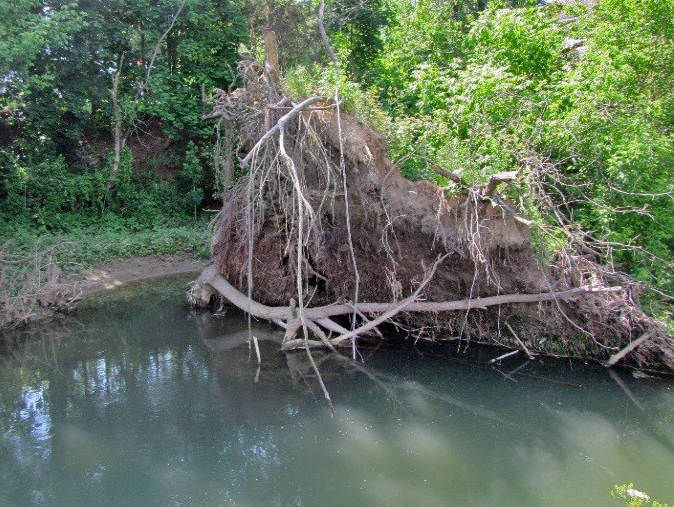 Example project: Town of Union Bridge, Maryland
Example project: Town of Union Bridge, Maryland
Sample letter to request Section 14 assistance
Section 103 - Beach Erosion and Hurricane and Storm Damage Reduction
Protection of public and private properties and facilities against damages caused by storm-driven waves and currents through the construction of revetments, groins and jetties. May also include periodic sand replenishment.
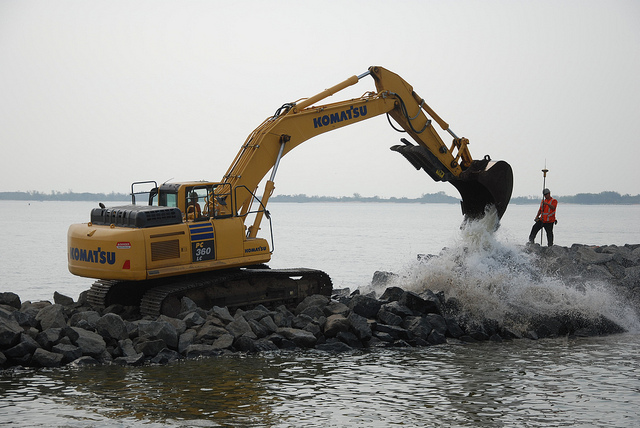
Sample letter to request Section 103 assistance
Section 107 - Navigation Improvements
Improvements to navigation including dredging of channels and widening of turning basins for commercial navigation improvements. May also include the construction of breakwaters, jetties and groins. The Corps does not participate in the cost of dredging berthing areas, slip space, access to individual private docks or the construction of piers, ramps and other shore facilities.
*Non-federal implementation cost is 10 percent up front during construction and 10 percent over a 30-year period for harbors with a design depth of 20 feet or less. For design depths of 20 to 45 feet, the up-front share increases to 25 percent, and more than 45 feet to 50 percent.
The Corps will be responsible for future project maintenance on a project with depths of 45 feet or less.
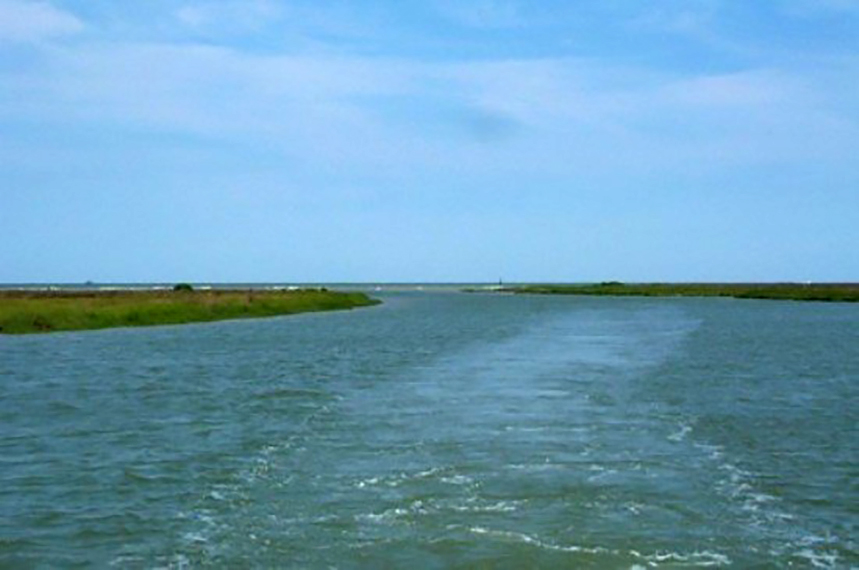 Example project: Rhodes Point, Maryland
Example project: Rhodes Point, Maryland
Sample letter to request Section 107 assistance
Section 111 - Mitigation of Shoreline Erosion Damage caused by Federal Navigation Work
Prevention or mitigation of erosion damages to public or privately owned shores along the coastline of the United States when these damages are a result of a federal navigation project. This authority cannot be used for shore damages caused by riverbank erosion or vessel-general wave wash. It is not intended to restore shorelines to historic dimensions, but only to reduce erosion to the level that would have existed without the construction of a federal navigation project.
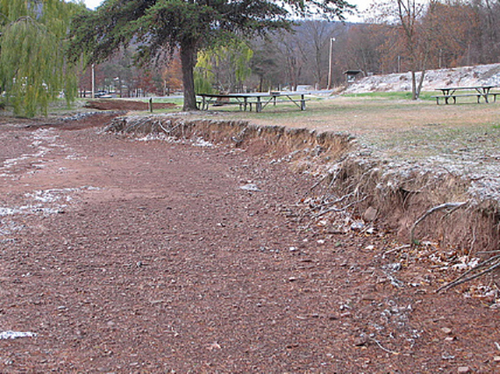
Sample letter to request Section 111 assistance
Section 204 – Regional Sediment Management & Beneficial Use of Dredged Material
Use of dredged material from new or existing federal projects for the reduction in storm damages to property and to protect, restore, or create aquatic and ecologically-related habitats, including wetlands.
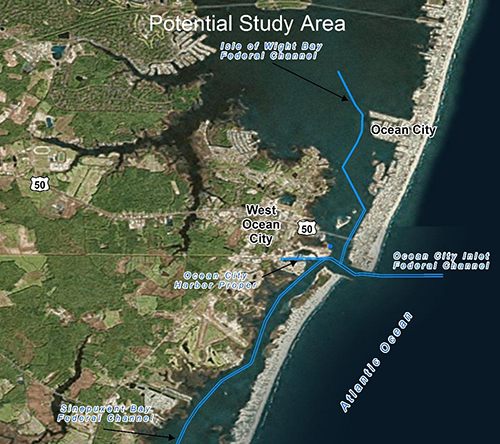 Example project: Ocean City inlet and bays regional sediment management, Maryland
Example project: Ocean City inlet and bays regional sediment management, Maryland
Sample letter to request Section 204 assistance
Section 205 - Flood Risk Management
Local risk reduction from flooding by the construction or improvement of structural flood damage reduction features such as levees, channels and dams. Non-structural alternatives are also considered and may include installation of flood warning systems, raising and/or flood proofing of structures and relocation of flood-prone facilities.
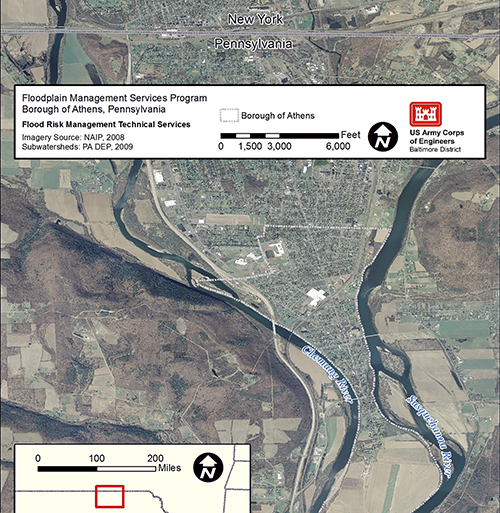 Example project: Athens Borough, Pennsylvania
Example project: Athens Borough, Pennsylvania
Sample letter to request Section 205 assistance
Section 206 - Aquatic Ecosystem Restoration
Aquatic ecosystem restoration projects that will improve the quality of the environment, are in the public interest, and are cost effective.
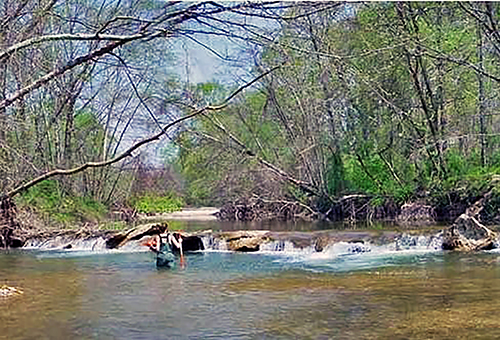 Example project: Paint Branch, Maryland
Example project: Paint Branch, Maryland
Sample letter to request Section 206 assistance
Section 1135 - Project Modifications for Improvement to the Environment
Improving the quality of the environment through structural and/or operational modifications to water-resources projects constructed by the Corps. Additionally, the Corps may undertake restoration projects at locations where an existing Corps project has contributed to degradation. The primary goal of these projects is ecosystem restoration with an emphasis on projects benefiting fish and wildlife.
 Example project: Foster Sayers Dam, Pennsylvania
Example project: Foster Sayers Dam, Pennsylvania
Sample letter to request Section 1135 assistance